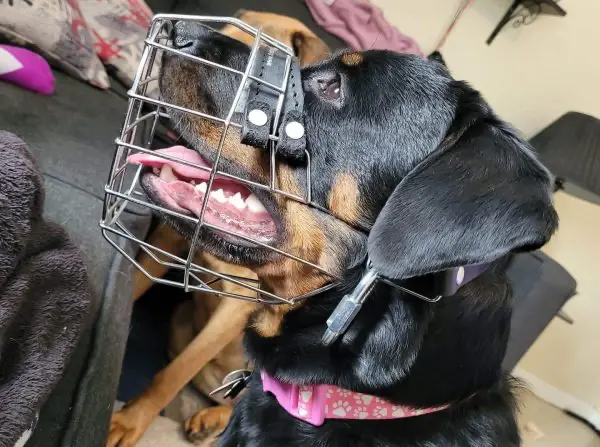
Rating: NNNNN
When Brian Williamson, Jamaica’s leading gay rights activist, was murdered in 2004, his body mutilated by multiple knife wounds, many celebrated.
A Human Rights Watch researcher saw a crowd gather outside the crime scene, some of them laughing and calling out, “Let’s get them one at a time,” “That’s what you get for sin,” “Let’s kill all of them.”
Others sang, “Boom bye bye,” a line from a popular Buju Banton dancehall track about killing and burning gays.
Is Jamaica the most homophobic place on earth? Since Willamson’s death, the international media has spilled much ink dissecting the question and coming down mostly on the yes side, blaming everything from dancehall reggae to the fact that criminalization of lesbian and gay sexuality gives licence to violence.
Coincidentally, in good ol’ T.O. the international grand marshal of this weekend’s Pride parade is gay activist Gareth Henry, who recently applied for refugee status here after fleeing Jamaica out of fear, he says, for his life. (See story, page 24).
But here, a white-?black chasm tends to colour the how-anti-?gay-is-Jamaica debate. Egale is careful to point out that other Caribbean countries have just as long and virulent a history of homophobia (see Barbados). More than half a dozen nations, all of them outside the Carribean, impose the death penalty for same-sex acts.
Since we’re pointing fingers, what of the constitutionally inherited British legal, if not moral, construct that makes homosexuality a crime throughout the Caribbean?
Says local activist Angela Robertson, “While the colonial masters have had a political change of heart back in their own countries, there’s a responsibility on the former overseers of Caribbean states in terms of the lingering climate of hatred toward gays and lesbians.”
From an outsider’s perspective, “Third World” human rights transgressions are somehow more barbaric than anything that could ever happen in the West – “uncivilized civilization,” Wesley Crichlow terms it.
The University of Ontario Institute of Technology prof and author of Buller Men And Batty Bwoys: Hidden Men In Toronto And Halifax Black Communities, posits that moral grandstanding and Western superiority complex aside, intolerance toward gays is by no means isolated to the islands. There are plenty of minority gays right here in the GTA living ghettoized lives ostracized from the mainstream.
“The ethnocentric gatekeepers (read white, male and more affluent than not) are not looking beyond Church Street,” says Crichlow.
“Everything is the fuckin’ 519 [Church Street Community Centre]. That’s only been a safe haven for those who are in the vanguard. Gays and lesbians also live on Vic Park, Jane and Finch, Etobicoke, Brampton and wherever in the GTA,” he says.
“When you have to deal with unemployment, underemployment, finding a place to live, putting food on your table – being LGBT doesn’t help you. And where within that same community do ethnic minorities turn for support and services?
“Is what’s happening in Jamaica really any different than Canada before same-sex laws were passed?” Crichlow asks. Seems insane to ponder. But incidents of gay bashing happen all the time here where the perpetrators are not found, charges not laid and complaints not followed up by the local constabulary.
No sane person would suggest that homophobia doesn’t exist among government and law enforcement officials or within the legal, medical and education fields – not to mention among neighbours and immediate family.
How many out LGBT cabinet ministers has our PM specifically and actively recruited? How long did it take Grit MP Bill Graham to come out?
Some suggest that the homophobia experienced by gays in Jamaica is not to be viewed in isolation, but as part of the elevated level of violence in the country, the murder capital of the world.
Artist Michele Chai, a self-?described “butch, Chinese-?Trinidadian feminist warrior dyke,” expands on Crichlow’s theme.
“How are you going to begin the conversation about homophobia in the Caribbean when we’re not visible even within this queer community in Canada?”
Gay activist Akim Larcher of Egale agrees that “within the racialized communities – South Asian, Muslim, African, Caribbean, etc – queers have more difficulty with specifically cultural and obviously societal acceptance.”
He says it’s the responsibility of all minority-?focused organizations here to embrace human rights for gays here and back home.
“The minority queers have to become more political and vocal. Unless we also speak up, nothing is going to change.” Adds Sistering’s Robertson, “Of course, Caribbean individuals and associations here should assume a different level of responsibility in speaking of the need for protection of the queer community back home. Whatever conversation has been taken up by gays and lesbians across the globe hasn’t been adopted by the Caribbean community here.”
Henry is heavier in terms of the contribution of coloured folk to the gay cause.
“I can’t believe that gays come here from countries of total oppression yet don’t want to be a vocal part of the movement. People of colour need to make clear that sexual orientation has nothing to do with race or socio-?economic background,” he says.
Counter to Crichlow’s aversion to gay ?ghetto fabulousness, he’s all over it. “I’m going walk on Church Street every chance I get,” says Henry.
sigcino@nowtoronto.com












